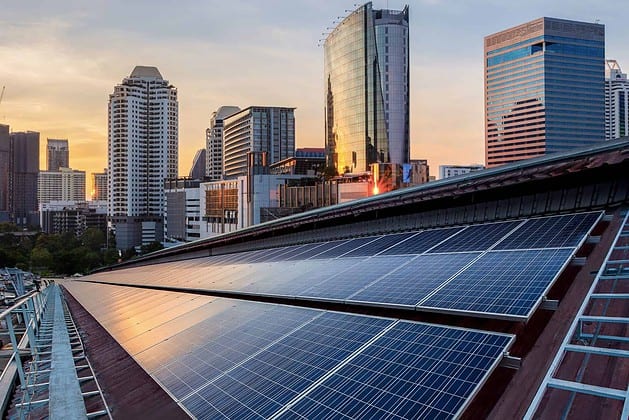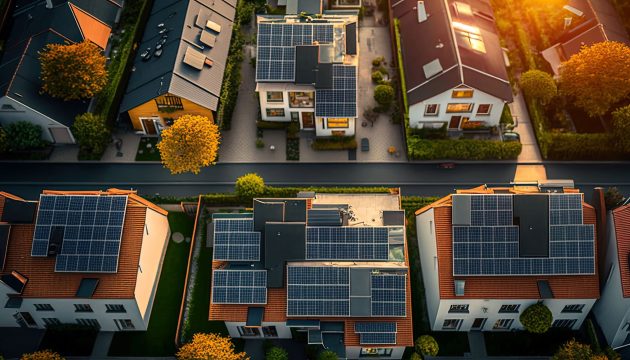Solar power is a frontrunner in the transition toward sustainable energy. It provides a renewable and abundant energy source with zero harmful emissions. Due to its benefits, solar power systems are becoming an essential feature of green building designs.
The adoption of solar power signifies an increasing awareness of sustainable design principles, where buildings contribute to a greener and more resilient urban fabric. As a result, more architects and builders are weaving solar panel installations into their designs. However, this process requires careful planning and consideration to be effective.
This quick guide offers comprehensive strategies for solar integration for sustainable construction.
Understanding Solar Energy Potential
The journey to effectively integrate solar panels into building design starts with thoroughly comprehending a site’s solar energy potential. This understanding is pivotal since the efficiency of solar panels largely depends on the sunlight available. Factors such as geographical location, local weather conditions, and the presence of surrounding structures can significantly impact the solar gain a building can obtain, so considering them is crucial before installing solar panels.
Ideally, sites closer to the equator, with fewer cloudy days and less potential for obstructions that block the sun, tend to have a higher solar potential. A comprehensive solar site analysis provides estimates of the potential solar power generation throughout the year. This preliminary information can inform the initial design stages, suggesting optimal building positions and orientations to capitalize on solar gain.
Choosing The Right Solar Panel Type
Upon determining the solar energy potential of your site, the next step is selecting the appropriate type of solar panels that best suits your project.
Three major types of solar panels are available in the market: monocrystalline, polycrystalline, and thin-film. Understanding these can significantly influence your project’s efficiency, cost, and aesthetic outcome.
- Monocrystalline Panels: They have a uniform dark look and rounded cells. They’re made from a single, pure crystal structure, which makes them the most efficient type of solar panels. Furthermore, monocrystalline panels have a long lifespan of around 25-30 years, making them a worthwhile investment for long-term projects. However, this high efficiency and longevity come with a higher cost than other solar panel types.
- Polycrystalline Panels: Distinguished by their blue, speckled look and square cells, polycrystalline panels are made from multiple crystal structures. They offer a reasonable compromise between cost and efficiency, which makes them a popular choice for residential projects. However, they require more space to produce the same amount of power as monocrystalline panels.
- Thin-Film Panels: These panels are made with lightweight and flexible materials. Due to their flexibility, they can be integrated into various building materials, like solar windows or solar roof tiles. They’re the easiest to produce and thus the cheapest option, but they also have the lowest efficiency and shortest lifespan. Thin-film panels could be suitable for large-scale projects where space isn’t an issue or for buildings with unusual shapes or design constraints.
Architects and builders must balance efficiency, cost, aesthetics, and the specific needs of their projects to make the most suitable choice.
Positioning And Orientation Of Solar Panels
The correct positioning and orientation of solar panels can significantly enhance their efficiency. For maximum sunlight exposure throughout the day, solar panels must face south in the northern hemisphere and north in the southern hemisphere. The optimal tilt angle varies but is typically around the same degree as the site’s latitude.
Vertical installations are an effective alternative in densely populated urban environments where rooftop space is limited. Moreover, installing solar panels on facades can reduce heat gain inside the building, adding to the building’s energy efficiency.
Integrating Solar Panels Aesthetically
Despite common misconceptions, integrating solar panels into building design doesn’t require aesthetic compromises—all that’s required is careful planning and creativity. As a result, they can serve as architectural elements that add to the building’s aesthetic appeal while fulfilling their primary function of generating power.
One effective approach is the use of building-integrated photovoltaics (BIPV). This technology directly incorporates solar cells into building materials like solar windows or roof tiles. BIPVs offer the possibility of maintaining the traditional look of a building while equipping it with the capability to harness solar energy.
Planning For Maintenance And Future Expansion
Another crucial factor to consider during the design stage is maintenance. Solar panels require regular cleaning and occasional repairs to ensure optimal performance over the years. Therefore, prioritizing accessibility is imperative.
Moreover, planning for future expansion of solar panel installations is a smart move. Energy demands may increase with time, and technological advancements might offer more efficient solar panels in the future. Designing with provisions for future expansion can help save considerable costs and hassle in the long run.
Navigating Legal And Regulatory Considerations
Different regions have varying regulations when it comes to solar power installation. These may include building codes, zoning laws, and restrictions. Building codes may limit where and how you can install solar panels, while zoning laws can restrict the height of structures or their proximity to property lines, which could affect solar panel placement.
Lastly, be prepared to obtain the necessary permits before starting the installation. This can be a lengthy process involving several inspections, so it’s wise to factor this into your project timeline.
Conclusion
Integrating solar panels into building design requires a careful understanding of various factors affecting its efficiency. With proper strategies, experts can design and build energy-efficient and future-proof structures.















